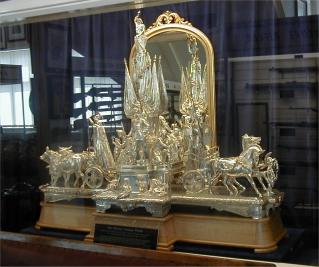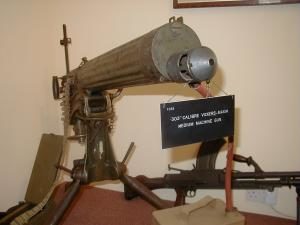NRA Museum
Quick Links In The Section
Opening Times
The Museum of the National Rifle Association is located above the main NRA offices. Entry is free although donations are always welcome.
OPENING HOURS
Tuesdays – 9.00am to 2.30pm
(please call prior to attendance)
Visits outside these hours may be possible by prior arrangement
TEL: 01483 797 777 x 127
EMAIL: museum@nra.org.uk
Beginnings
First mooted in 1905, the museum project was instituted with the best of intentions, but circumstances delayed fruition for some 90 years! In the main, it was the lack of suitable premises which posed the problem.
From the first days of the Association, generous members donated a steady stream of artefacts, most of which were put into store. Among these were many historically important rifles and pistols, which form the core exhibits in the Museum as it is today. The superb condition of those firearms is largely due to the care and attention of the late Dr LP Clarke, continued by NRA armourers post WWII. As well as caring for the collection, Dr Clarke as Editor kept the NRA Journal in production for several years virtually single-handed.
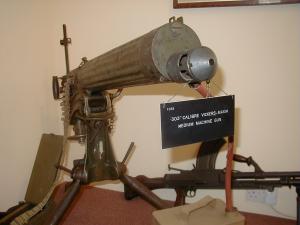
A .303 Vickers machine gun – one of the historic firearms in the museum.
Loss of items
In 1960 the collection suffered a severe loss when important and valuable items were stolen. Many have never been recovered. Employed as a ‘stand-in’ for the NRA armourer who was sick, the thief was a serving soldier armourer who had also been stealing service weapons on a large scale. He was caught, convicted and sent to prison. Fortunately, most of the firearms not recovered were items which would not have figured in the museum collection. Nevertheless they would have realised a considerable sum. The collection lay largely dormant until the 1965 firearms amnesty, when the donation of a large number of surrendered firearms rekindled a degree of interest.
In 1974 Air Commodore Arthur Riall, the then Secretary of the Association, decided that something needed to be done and he approached Mr NEC (Ted) Molyneux with a proposal that a proper organisational framework be formulated for the museum. An inventory and valuation followed. After careful consideration it was decided that the Museum’s content should only relate to the Association and not constitute a general collection of firearms. Consequently its proper title is ‘The Museum of the National Rifle Association’. This decision resulted in the close scrutiny of all the firearms, which were either classified as ‘collection’ or ‘for disposal’. Those for disposal were consigned to well-known auction houses, where their sale generated many thousands of pounds for the Museum Fund.
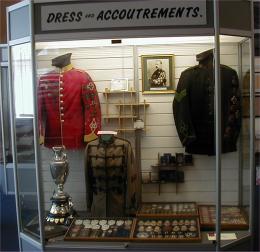
Enthusiastic Volunteers
More years elapsed, but now with the attention of interested and enthusiastic volunteers ensuring the maintenance of the collection in good condition. For this we can particularly thank John Light, John Beith, Alan Bell, Bill Curtis and Ted Molyneux, the active members of a working group formed in 1991. However, there remained the problem of where a proper museum might be sited, which situation was at stalemate until broken by the computerisation of statistics. By late 1994 the ‘stats’ area of the first floor in the NRA office block had become vacant, as the computer rendered the old systems obsolete.
At that time Col (Ret’d) CA ‘Sandy’ Ewing OBE was Chief Executive of the Association and it was his initiative and vision which created the Museum that we have today. He had the floor substantially reinforced with RSJs, a ‘keep’ established and the whole area fitted with alarms. He also organised a committee of interested parties, to advise and plan the project. In consequence, the offices were scoured for anything which ought to be preserved as significant items of NRA history, resulting in a huge accumulation of records, ephemera, books and suchlike dating from our formation in 1860, from which careful sorting disposed of inconsequential dross, leaving a collection of true historical significance. A true-to-scale floor plan was produced and Sandy contacted several manufacturers of showcases, to see what was available, suitable and affordable. The decision was made and early in 1994 the showcases, in kit form, arrived.
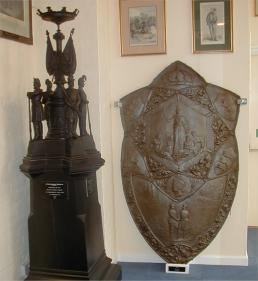
Two of the larger trophies that are shot for during the annual competitions held at Bisley.
Ted Molyneux
When Sandy Ewing retired as Chief Executive he took on a consultative role, while Ted Molyneux resumed the role of Hon. Curator, to which he had been originally appointed in 1988. A working Museum Committee was formed to handle the practicalities of the project and it is largely thanks to Jim Cleaver, Bill Curtis, Stewart Davis, Dick Ellis, Jim Hallam, Eric McGibbon and Ted Molyneux that the Museum has been maintained as it is today.
There are two showcases in the foyer of the NRA front office, which exhibit firearms from wheel-locks through to the conversion to the 7.62 mm NATO calibre. These whet the appetite for better things, upstairs in the Museum proper!
There are exhibits laid out in rough chronological order clockwise, starting with our Wimbledon period (1860-1889), progressing through our arrival at Bisley in 1890, the development there, the interruptions of the two World Wars and on to the present. A prime exhibit is the muzzle-loading Whitworth rifle which HM Queen Victoria used to fire the first shot at Wimbledon, on 2 July 1860, together with the target at which she fired. Alongside, there is the Whitworth rifle used by Edward Ross to win the first Sovereign’s Prize, also in 1860.
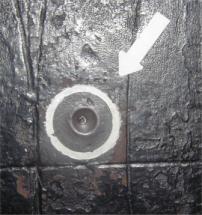
The mark on the target left by the shot Queen Victoria fired at Wimbledon in 1860 to open the competitions.
Exhibits
Some of the largest pieces from the NRA’s massive silver collection, including the magnificently impressive National Challenge Trophy and the huge China Cup, are housed in the Museum. There is a fine library and a picture gallery containing many watercolour paintings of scenes at Wimbledon. Not on display is a study collection of rifles available to the interested on request. These include foreign military equipment on loan, plus many variations of types used in NRA competitions past and present.
The museum was officially opened on 2 April 1997 when Archie Smith (GM 1925) signed the Visitors Book just 10 days before his 100th birthday. Since that time the comments seem to indicate that our Museum is well presented, interesting and well worth visiting.
Come and see for yourself!
